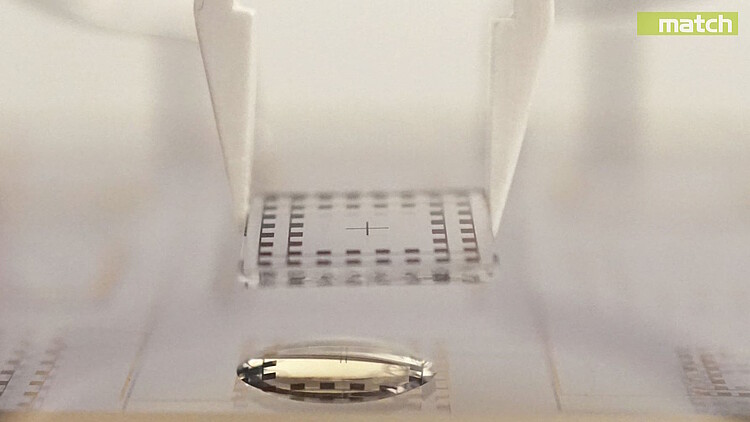Self-Assembly

| E-Mail: | stucki@match.uni-hannover.de |
| Team: | Martin Stucki |
| Year: | 2019 |
| Funding: | PhoenixD, DFG |
| Duration: | 7 years |
The handling of very small and sensitive components is challenging the assembly technology. In addition to the low mechanical load limit, micro-specific component behaviour also makes the precise positioning of individual components difficult. Therefore, handling almost always requires very complex machine and handling technology, which accounts for a large part of the production costs of hybrid microsystems.
One approach to meet these challenges is the design of self-assembly systems. Alignment is caused by forces that are generated by physical effects and can be enhanced by the design of the components themselves and by external influences, e.g. by applying a voltage field. Since the effective use of this assembly concept usually requires a special component design, an implementation for existing products or processes is associated with high costs. However, great potential can be seen in the design of new systems where the special assembly requirements can still be taken into account during the development phase. Our core objectives in this area are to explore new approaches for self-assembling or self-aligning systems and to identify and apply design principles for a "Design for Assembly".
Contact: Martin Stucki
One highlighted publication with Open Access can be found here:
Stucki, M.; Schmann, C.; Raatz, A. (2021): Electrostatic Self-Assembly Technique for Parallel Precision Alignment of Optical Devices, Proceedings of the 2nd Conference on Production Systems and Logistics (CPSL 2021)
DOI: https://doi.org/10.15488/11255
Media Self-Asembly



Grafic: Operating principle of electrostatic self-assembly
Video: Chip alignment on substrate




















